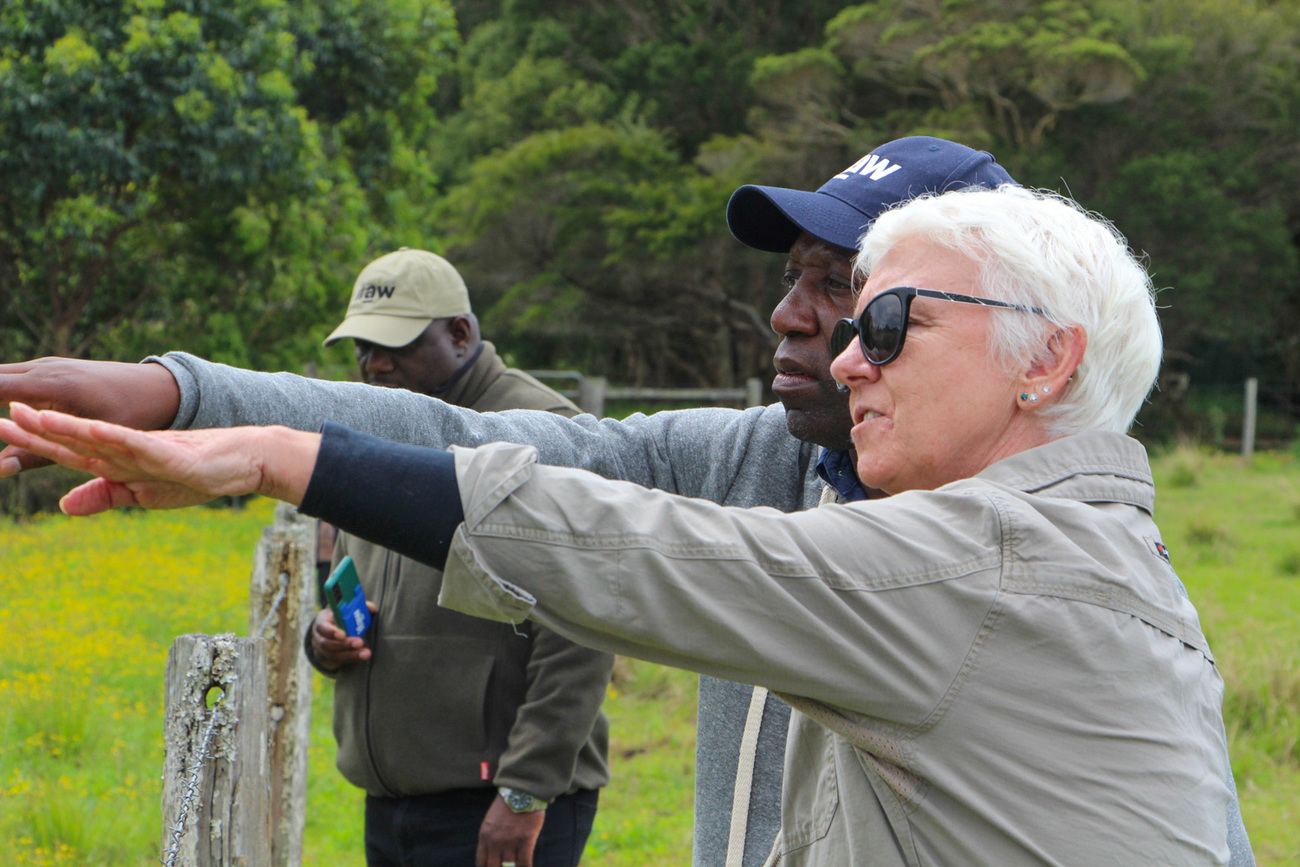koala habitat: restoring to connect and connecting to restore
koala habitat: restoring to connect and connecting to restore

Australia and Africa: Two continents, many thousands of kilometres apart, both grappling with the same question—how can people and wildlife coexist and thrive in a changing climate?
This past October, I visited Australia for the first time, where our Oceania team has been restoring and connecting critical wildlife habitats along the country’s east coast. This has become more important than ever with climate change increasing the frequency and intensity of disasters, further fragmenting and destroying habitats already broken by land clearing and development.
I couldn’t help but see parallels between that work and IFAW’s visionary Room to Roam initiative in Africa, where we aim to protect and secure a connected network of key savannah elephant habitats in East and Southern Africa to ensure their populations persist.
Just as the elephant is an icon of Africa, the koala is an icon of Australia. Both face the impending risk of extinction as humans encroach on their habitats. And on both continents, IFAW works to create safe passages for these animals to help them coexist with people.
restoring habitat
Elephant and koala populations are effectively becoming stuck in fragments of their formerly connected habitats.
The severe impact of this fragmentation is something the IFAW veterinarian team at Friends of the Koala in New South Wales experiences daily. They are seeing a significant increase in koalas that have been struck by vehicles. As we knock down their habitat for development, koalas are forced to cross busy roads to reach their destinations.
The veterinarian team treats and rehabilitates these koalas, but they still need to be released into safe areas where they can thrive. To that end, through our partnership with Bangalow Koalas, we have planted thousands of trees in New South Wales that koalas and other native wildlife can use.
On my recent trip, it was truly inspirational to see trees planted just three years ago already being used by local koalas.
community collaboration
Our rescue and restoration work in Australia relies on collaboration with communities, Indigenous groups, governments, the private sector and other NGOs.
At Ngunya Jagoon Indigenous Protected Area in Wardell, New South Wales, for instance, we are leaning on the expert knowledge of the Jali rangers who are stewards of this biodiversity and cultural hotspot. This landscape was significantly impacted by the Black Summer bushfires and recent catastrophic floods. Here, we’re collecting and analysing koala scat to learn about the post-fire health of this koala population, in collaboration with government and our partners at Friends of the Koala and the University of the Sunshine Coast’s Detection Dogs for Conservation. This work is shedding light on how we can help koalas thrive into the future.
Similarly, our Room to Roam initiative relies on local rangers working on the frontlines, promoting citizen science and sustainability.
These partnerships are crucial, as the challenges we face in Australia and Africa are too complex to achieve on our own.
innovative solutions
At times, we need to explore new, innovative ways to help our wildlife.
I saw this innovation in action at Two Thumbs Wildlife Trust Sanctuary near Cooma in southern New South Wales. This once-biodiverse hotspot was destroyed by the Black Summer bushfires. Many hollow-dependent animals that once inhabited this 700-plus-hectare property home now have nowhere to go.
During my visit, I learned that natural hollows take up to two centuries to develop in a eucalypt tree. To help the animals that rely on them, our partners at Habitat Innovation and Management have developed Habitech nest boxes that mimic natural hollows found in trees and provide a ready-to-move-in home for endangered animals like the greater glider and the gang-gang cockatoo. Together, we’re offering safe spaces for threatened species to return to the area and thrive.
Also, with our partner Great Eastern Ranges (GER), we’re helping to build community and wildlife resilience against future disasters. I witnessed this resilience during my visits to project sites impacted by fires and floods in the Lockyer Valley of Southeast Queensland. I was touched by the life-threatening experiences of landlords during the fires and their spirited resolve to “build back better” for nature protection and habitat restoration.
The work IFAW and GER are doing in partnership to help these communities and landscapes heal is contributing to the overarching aim of improving connectivity, which is also a key aim of Room to Roam.
coexistence relies on connectivity
This was the theme of the GER Connecting People, Connecting Nature conference that I participated in during my visit, which IFAW proudly sponsored. The conference brought together like-minded people to discuss the biggest challenges facing our planet and the solutions we are collectively implementing. It was during this conference that I detailed the similarities between Room to Roam and our Australian work and how we can learn from both.
The take-home message from the conference, and the entire trip, was that IFAW’s ambitious goals to connect key habitats for wildlife in both Australia and Africa will only be accomplished by connecting people—those in government, Indigenous people, local communities and members of the private sector. By working collaboratively, we can ensure animals and people thrive together into the future.
Related content
Every problem has a solution, every solution needs support.
The problems we face are urgent, complicated, and resistant to change. Real solutions demand creativity, hard work, and involvement from people like you.